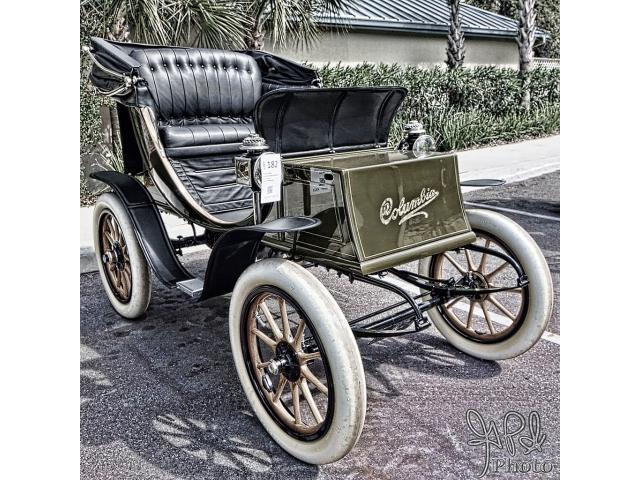1908 Columbia Electric Victoria Phaeton
- Brand: Columbia
1908 Columbia Electric Victoria Phaeton
Colonel Albert Augustus Pope established his manufacturing empire in the aftermath of the American Civil War. His first major product line was bicycles, and by the end of the 19th Century the Colonel was head of the American Bicycle Company, a consolidation of some 40-plus firms. Pope's first venture into the field of powered transport occurred in the late 1890s with the electrically-powered Columbia, though a few gasoline-powered cars were made also, which was followed in 1903 by the Pope-Robinson, the latter resulting from partnership with John T Robinson. Pope-Hartford, Pope-Toledo, Pope-Tribune and Pope-Waverley were all added to the ever-expanding fold during the following year. Similarly, Colonel Pope's first motorcycles were marketed under a variety of names – American, Columbia, Cleveland, Crescent, Imperial, Monarch, Rambler and Tribune – though this was a case of applying different badges to essentially the same product range.
In 1899 Pope merged his motor manufacturing interests with those of the Electric Vehicle Company to form the Columbia Automobile Company. Hiram P Maxim was responsible for designing the first Columbias, his place as chief engineer being taken in the early 1900s by Frederick A Law. Electrically powered models continued to make up the bulk of Columbia production – in 1904 there were 37 listed as opposed to only two gasoline cars: a 12/14hp twin-cylinder and 30/35hp four. Gradually, the market for electric cars contracted and gasoline models took over. In 1911 there were only two of the former in Columbia's range while that same year the company was offering ten gasoline-powered cars on two different chassis. By then, Columbia had been absorbed by Benjamin Briscoe's United States Motor Company, only to disappear when USMC collapsed in September 1912.
A rare survivor from the first generation of electrically powered American automobiles, this car is an example of Columbia's Mark LXX Victoria Phaeton, introduced in 1908, which continued in production as the Mark 70 into 1911. The immediately preceding owner purchased this car from the James Cousens Cedar Crossing Collection in 2008. The Columbia was complete but well worn when acquired by Cousens, who treated it to a complete 'last nut and bolt' restoration. The Key Museum acquired the car at a US auction in 2012. Elegant yet understated, the Columbia is handsomely finished in Brewster Green with black leather upholstery and matching convertible top.
| Specification | |
| Production Start | 1908 |
| Country of origin | USA |































